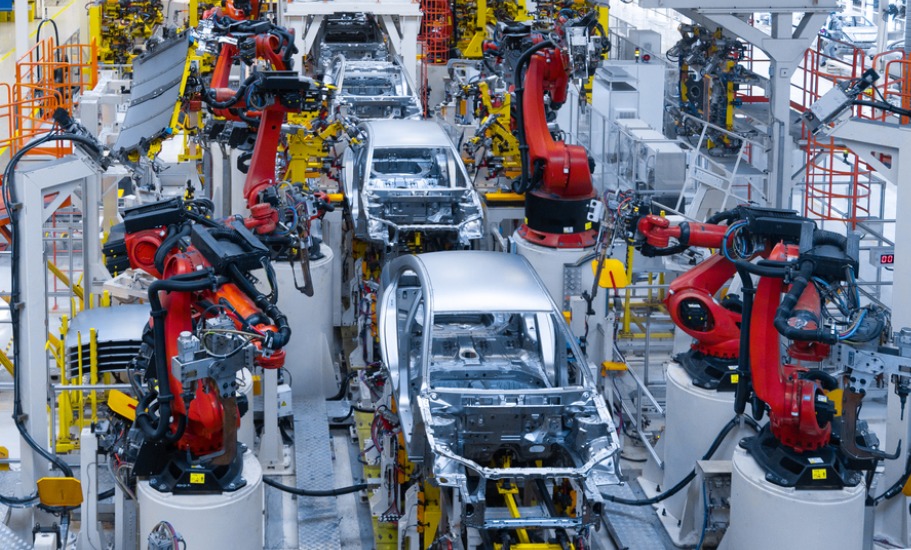
Transition to BS-VI may see little gain for auto makers
A fortnight from now, the Indian automobile sector would have made a painful transition from BS-IV to BS-VI emission norms, in the process losing market share, battling uncertainty over policies and legal lock jams. The cost involved in this transition is expected to be as high as ₹60,000 crore.

A fortnight from now, the Indian automobile sector would have made a painful transition from Bharat Stage (BS)-IV to BS-VI emission norms, in the process losing market share, battling uncertainty over policies and legal lock jams.
The cost involved in this transition is expected to be as high as ₹60,000 crore ($8 billion).
One would expect the transition would lift the auto industry out of a long-drawn recession, but according to analysts at the Swiss-based financial and investment multinational, UBS, there will be a mere 6 per cent increase in sales during FY21 after having seen a decline of 15 per cent year on year in industry volumes (its worst-ever year in decades) at the end of the current financial year.
The BS norms are the government-mandated emission norms for the auto industry. The country adopted the first set of these norms for petrol cars in 1991 and for diesel variants in 1992 to regulate emissions followed by BS-II and BS-III norms, which were implemented in 2005 and 2010, respectively.
Related news: Indian Oil ready for BS-VI supply, says fuel prices to rise from April 1
The BS-IV norms were implemented across the country in 2017, but because of the delay in its implementation, the government leapfrogged from BS-IV to BS-VI, skipping BS-V and set a deadline April 01, 2020, for all vehicle manufacturers to implement the new norms similar to Euro 6 norms, for all vehicles.
This was necessary as India faces high levels of air pollution. According to various studies, the transport sector is responsible for one-third of particulate matter pollution, the main reason for health and respiratory diseases.
According to UBS, low-sulphur fuels are expected to decrease particulate matter emissions by 80 per cent from diesel cars and 25 per cent less nitrogen oxide from petrol cars. The key pollutants targeted under these norms are nitrogen oxide, carbon monoxide, hydrocarbons and particulate matter.
The government has stood firm regarding the implementation of BS-VI norms, warding off strong opposition from almost all vehicle manufacturers and component makers whose main grouse against the transition was that the declining sales made it impossible for them to invest more money into upgrading their vehicles to conform to the new emission standards.
Related news: Even if it’s late, Centre should consider Bajaj’s views seriously
They are not entirely wrong. The declining sales have more to do with the government’s flip-flop on several issues concerning the auto industry. The government could not decide on the adoption of electric vehicles. During the first term of the NDA Government, the policy-makers insisted on getting all vehicle manufacturers on the same page, and even setting an unrealistic target of 2020 for all the automakers to produce electric vehicles.
When the government realised it was not as easy as making an announcement as sourcing lithium-ion batteries that power the electric vehicles were difficult, it moved its target. When even that didn’t help, it decided not to make it mandatory for the vehicle makers to conform to the 2022 target.
But the government’s flip-flop regarding the auto industry isn’t confined to the adoption of electric vehicles. It can be seen in its every other action.
According to Bajaj Auto managing director Rajiv Bajaj, who till recently was supportive of the government, the policymakers want the auto industry to adopt as many changes as possible without giving any concessions in return.
Bajaj told journalists at the launch of Bajaj Auto’s electric vehicle recently the government should not have insisted on adoption of anti-braking system (ABS) for two-wheeler manufacturers, followed by make it mandatory for vehicle owners to buy third-party insurance cover and transitioning to BS-VI norms from April 1 this year.
Related news: No immediate measures to boost demand: Auto industry on Budget 2020
He said this has driven up the cost of the vehicle to 30 per cent, which collectively resulted in a huge drop in sales. “The single-most important reason for the current slide is over-regulation by the government. We are budget agnostic. The over-regulation is killing the industry,” he told a news conference in January.
Bajaj is making all the right noises but a bit too late as the deadline is knocking at the doors. What the government can do to soften up the blow is to reduce the GST for all vehicles to 18 per cent from 28 per cent, but that may not happen now as the NDA runs a government with a widening fiscal deficit.
The fiscal deficit or gap between expenditure and revenues is ₹9,31,725 crore or 132.4 per cent of the full-year target at December-end because of the slowdown in the pace of revenue collections.
The revival will take a long time to come as the auto industry, especially the passenger car industry, already under stress due to the government’s unrealistic goal-setting, grapples with changing consumer trends such as increasing dependence on a rapidly expanding metro rail across cities, traffic jams and a middle-class workforce which is increasingly working from home.
Related news: Vehicle production sees a steep fall in January, reveals SIAM


